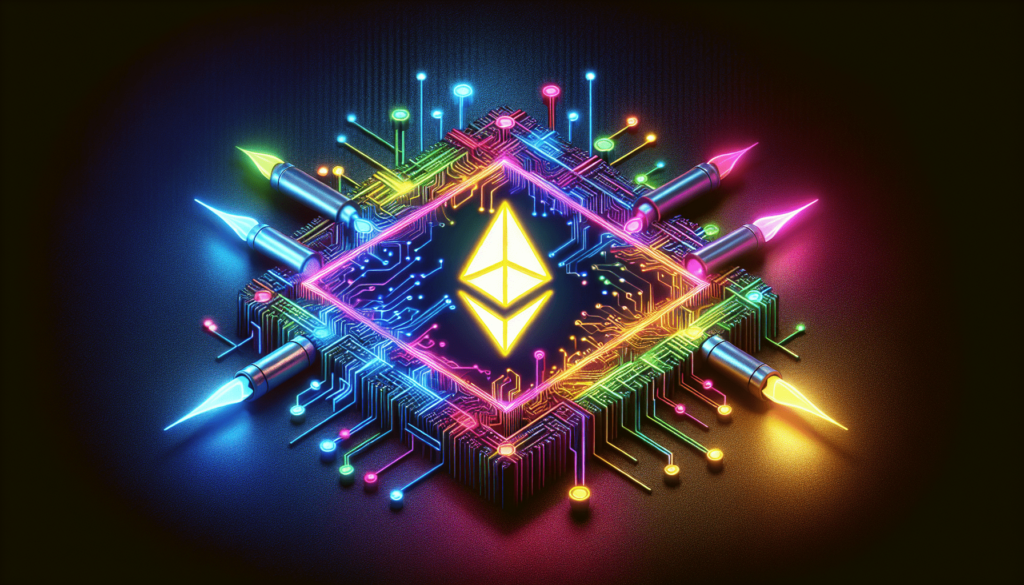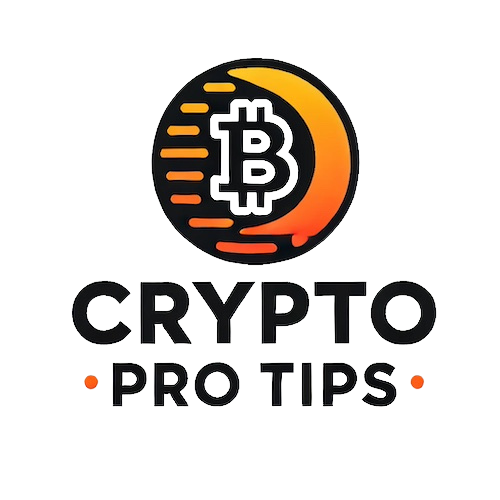Have you found yourself wondering what all the buzz around NFTs is about? You’re not alone. In a world where digital assets are becoming increasingly significant, Non-Fungible Tokens (NFTs) have carved out a unique niche, capturing the imagination of tech enthusiasts and investors alike. Their rise in the crypto world has been nothing short of meteoric, but what exactly makes them so special?

Understanding NFTs: The Basics
What Are NFTs?
Non-Fungible Tokens, or NFTs, are unique digital assets verified using blockchain technology. Unlike cryptocurrencies such as Bitcoin or Ethereum, which are fungible (where one unit is essentially the same as any other), NFTs are unique and cannot be exchanged on a one-to-one basis.
How Do NFTs Work?
NFTs are created using blockchain technology, usually Ethereum. When you purchase an NFT, you’re not just buying the digital asset but also the ownership proof stored on the blockchain. This proof gives the NFT its value because it’s verifiable and tamper-proof.
A Brief History of NFTs
While NFTs have surged in popularity recently, their origins can be traced back to 2012 with the concept of ‘Colored Coins’ on the Bitcoin blockchain. However, it wasn’t until Ethereum introduced ERC-721 in 2017 that NFTs really took off, with projects like CryptoKitties making headlines.
Why Are NFTs Valuable?
The value of NFTs primarily comes from their uniqueness and verifiable ownership. This includes digital art, music, videos, and even tweets. The rarity and the ability to own something distinctive in the digital world add significant allure.
How NFTs Integrate with the Crypto World
Blockchain and NFTs
The foundation of NFTs lies in blockchain technology. Each NFT is attached to a smart contract—a self-executing contract with the terms of the agreement directly written into code, stored and replicated on the blockchain.
Ethereum: The Backbone of NFTs
Most NFTs are built on Ethereum, thanks to its advanced scripting language and robust ecosystem for decentralized applications (dApps). Ethereum’s ERC-721 and ERC-1155 standards have provided the framework for creating, buying, and selling NFTs.
| Feature | ERC-721 | ERC-1155 |
|---|---|---|
| Token Type | Non-Fungible | Semi-Fungible |
| Purpose | Unique items (e.g., art) | Multiple items (e.g., game items) |
| Transferability | Individual token transfer | Batch token transfer |
Other Blockchain Platforms
While Ethereum is dominant, other blockchains like Binance Smart Chain, Flow by Dapper Labs, and Tezos are also making strides in the NFT space, each offering unique features and benefits.
Cryptocurrencies as a Medium of Exchange
NFTs usually require cryptocurrencies for transactions, with Ethereum (ETH) being the most common. This symbiotic relationship increases the use and value of cryptocurrencies, propelling both markets forward.

Use Cases of NFTs
Digital Art
Digital art is perhaps the most celebrated use case for NFTs, turning artists into millionaires overnight. NFTs provide a mechanism for artists to tokenize their work, ensure originality, and receive royalties from resales.
Gaming
In the gaming industry, NFTs are revolutionizing how virtual assets are owned and monetized. Items like weapons, skins, and even entire gaming worlds can be owned, traded, and sold as NFTs.
Music and Entertainment
Musicians and content creators are leveraging NFTs to distribute their work, engage with their fans, and generate income. NFTs can include music tracks, concert tickets, and even fan experiences.
Virtual Real Estate
Virtual real estate platforms like Decentraland and The Sandbox allow you to buy, sell, and develop virtual land as NFTs. This is creating entirely new markets and investment opportunities.
Other Emerging Use Cases
From scholarly articles and patents to domain names and fashion, the potential applications of NFTs are boundless. Their versatility makes them a compelling addition to various industries.
Benefits of NFTs
Ownership and Provenance
NFTs offer incontestable proof of ownership, which is invaluable in the digital era where copying and duplicating assets is rampant. Provenance tracking helps verify the asset’s history and value.
Royalties and Revenue Share
Artists and creators benefit from royalties on NFT resales. Smart contracts make sure that a percentage of each sale goes back to the original creator, ensuring fair revenue distribution.
Accessibility
NFTs democratize the asset market, allowing anyone with an internet connection to participate. You don’t need a gallery, auction house, or middleman to sell your digital assets.
Liquidity
NFT platforms facilitate quick and easy buying and selling, providing liquidity to digital assets previously considered non-liquid, thereby creating dynamic markets.
Challenges and Criticisms
Environmental Impact
Blockchain technology, particularly Ethereum, consumes significant amounts of energy. This has led to criticism around the environmental impact of minting and trading NFTs. Efforts are underway to address this via more energy-efficient consensus algorithms.
Market Volatility
NFTs are subject to high market volatility, which can result in significant financial risk. The value of NFTs can fluctuate wildly, influenced by market sentiment and speculation.
Security Concerns
While blockchain is secure, the platforms and wallets used to store and trade NFTs can be vulnerable to hacks and scams. Users must exercise caution and employ best practices to safeguard their assets.
Regulatory Hurdles
The regulatory landscape for NFTs is still evolving. Governments around the world are grappling with how to classify and regulate NFTs, which could lead to future changes in law and compliance requirements.
Future of NFTs
Interoperability
Greater interoperability between different blockchain networks could unlock new possibilities for NFTs, enabling seamless transfers and interactions across platforms.
Integration with Traditional Markets
As NFTs gain traction, integration with traditional art, gaming, and real estate markets could become more common, bridging the gap between physical and digital assets.
Technological Innovations
Technological advancements like Layer 2 solutions, which aim to improve scalability and reduce transaction costs, could enhance the NFT experience and broaden adoption.
Mainstream Adoption
As celebrities, brands, and major corporations enter the NFT space, mainstream adoption is likely to accelerate, bringing legitimacy and awareness to this burgeoning market.
Tokenization of Real-World Assets
Beyond digital assets, the tokenization of real-world assets like property, stocks, and bonds as NFTs could revolutionize how these assets are traded and owned.
How to Get Started with NFTs
Create a Digital Wallet
To start buying, selling, or creating NFTs, you need a digital wallet that supports NFT standards. Popular options include MetaMask, Trust Wallet, and Binance Chain Wallet.
Fund Your Wallet
NFT transactions typically use cryptocurrencies, so you’ll need to purchase some. Ethereum (ETH) is the most commonly used, but platforms like Tezos, Binance Coin (BNB), and Flow have their own supported currencies.
Choose a Marketplace
Select an NFT marketplace that suits your needs. OpenSea, Rarible, and Foundation are popular for art, while platforms like NBA Top Shot and Axie Infinity cater to specific niches like sports and gaming.
| Marketplace | Niche | Advantages |
|---|---|---|
| OpenSea | General | Wide selection, user-friendly |
| Rarible | Art, Music | Community governance, diverse content |
| NBA Top Shot | Sports | Officially licensed NBA collectibles |
| Axie Infinity | Gaming | Play-to-earn mechanics |
Minting NFTs
If you’re a creator, you can mint your own NFTs by following the minting process on your chosen platform. This usually involves uploading your digital asset, adding metadata, and minting it on the blockchain.
Buying and Selling
Engage in the NFT marketplace by buying and selling NFTs. Pay attention to bidding, auction tactics, and market trends to maximize your investments.
Conclusion
You’ve journeyed through a comprehensive overview of the role of NFTs in the crypto world. From their fundamental definitions and historical context to their current applications and future possibilities, NFTs present an exciting yet complex segment of the digital asset landscape.
Whether you’re an artist aiming to monetize your work, a gamer looking to own virtual items, or an investor scouting new opportunities, NFTs offer a myriad of possibilities. While challenges like environmental impact, market volatility, and regulatory issues require attention, the benefits of ownership, royalties, and accessibility make NFTs a revolutionary force in the crypto world.
As you consider delving into NFTs, always exercise caution, perform thorough research, and stay informed about market trends and technological advancements. The world of NFTs is ever-evolving, and staying updated ensures you can make the most of what this innovative technology has to offer.
So, what role will NFTs play in your life? The possibilities are endless, and the journey has only just begun.

